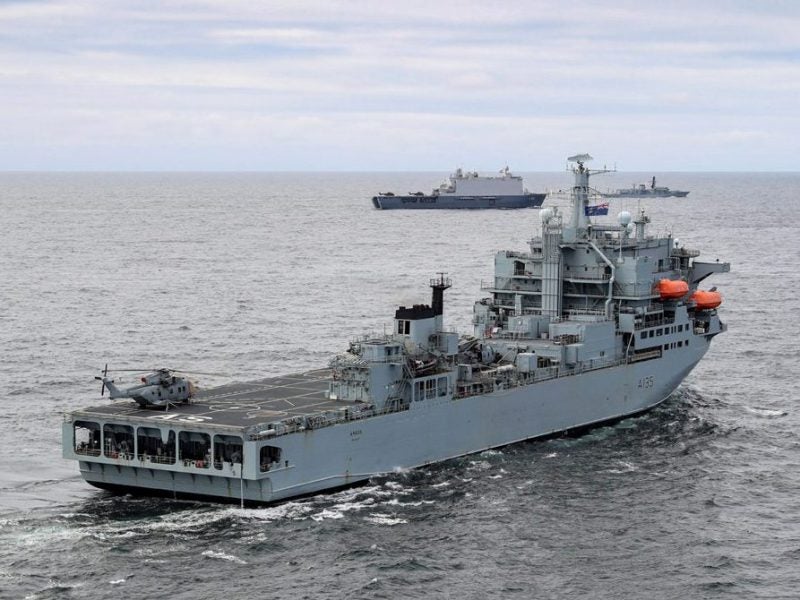
The UK National Audit Office (NAO) has reported that the Royal Navy will lose medical and minehunting capabilities by the end of the decade under the current ten-year equipment plan, with the Navy yet to decide on a plan to replace the RFA Argus.
The Ministry of Defence (MOD) earlier this week told Naval Technology that it still has yet to settle on a plan to fill the capability gap left when the Royal Fleet Auxiliary (RFA) Argus exits service in 2024.

Discover B2B Marketing That Performs
Combine business intelligence and editorial excellence to reach engaged professionals across 36 leading media platforms.
The 100-bed Primary Casualty Receiving Ship provides the Royal Navy with a Role 3 medical facility including resuscitation and surgical facilities. The vessel also has facilitates for radiology and an on-board CT scanner.
Despite the ship being due for retirement in just four years, the MOD told Naval Technology: “The consideration of options to deliver these capabilities after Argus leaves service remains ongoing.”
Although not a hospital ship, as she comes equipped with defensive weaponry, RFA Argus has acted as the Royal Navy’s only principal Primary Casualty Receiving Ship after being refitted for the role in 2009. Argus was launched as a roll-on, roll-off ferry (RORO) and container ship in 1981.
She was taken up from trade at the onset of the Falkland’s war and used as an aircraft transport vessel before being bought outright.

US Tariffs are shifting - will you react or anticipate?
Don’t let policy changes catch you off guard. Stay proactive with real-time data and expert analysis.
By GlobalDataIn the past, RFA Argus was deployed to West Africa to help fight the outbreak of Ebola, provided disaster relief in the Caribbean and has long supported British operations in the Middle East. Argus was first fitted as a fully-functional hospital ship for the First Gulf War.
The RFA plans to procure three new Fleet Solid Support Ships, however, progress on these vessels has been put on hold since the MOD paused the contract over concerns about value for money. The procurement was put on hold last November and has still yet to be restarted.
According to the NAO, the plan’s current funding profile will see the medical and helicopter training capabilities of the RFA Argus lost without a replacement as, despite the navy believing these capabilities needing to be addressed, the plan does not include any funding to extend or replace them.
This problem extends to the navy’s minehunting capabilities, which under the current plans will be lost in the early 2030’s unless replaced. Despite not directly funding extension or replacements for these capabilities, the NAO noted that £31m had been made available in the MOD Transformation Fund to ‘explore a potential new way of delivering this capability.’
The NAO said: “The plan’s funding profile also means that capabilities which are currently in service will be lost during 2019–2029. For example, the ship RFA Argus provides medical and helicopter training facilities but is due to go out of service in 2024.
“The navy is also due to lose its minehunting capability in the early 2030s. Although the Navy believed that this capability needed to be addressed in the 2019–2029 Plan, it does not include funding to extend or replace this equipment. The Transformation Fund did, however, make up to £31m available to explore a potential new way of delivering this capability.”
The NAO found that the ten-year equipment plan continues to be unaffordable, with a black hole of up to £13bn. The head of the NAO said: “The MOD has not made the necessary strategic decisions to address the 10-year affordability gap and there is evidence that its continued short-term focus on living within annual budgets is increasingly affecting the armed forces’ ability to maintain and enhance the UK’s military capability.
“The MOD needs to determine its strategic priorities so that it can develop an affordable long-term programme of investment.”
The report from the NAO marks the third successive year that the equipment plan has been deemed unaffordable.





